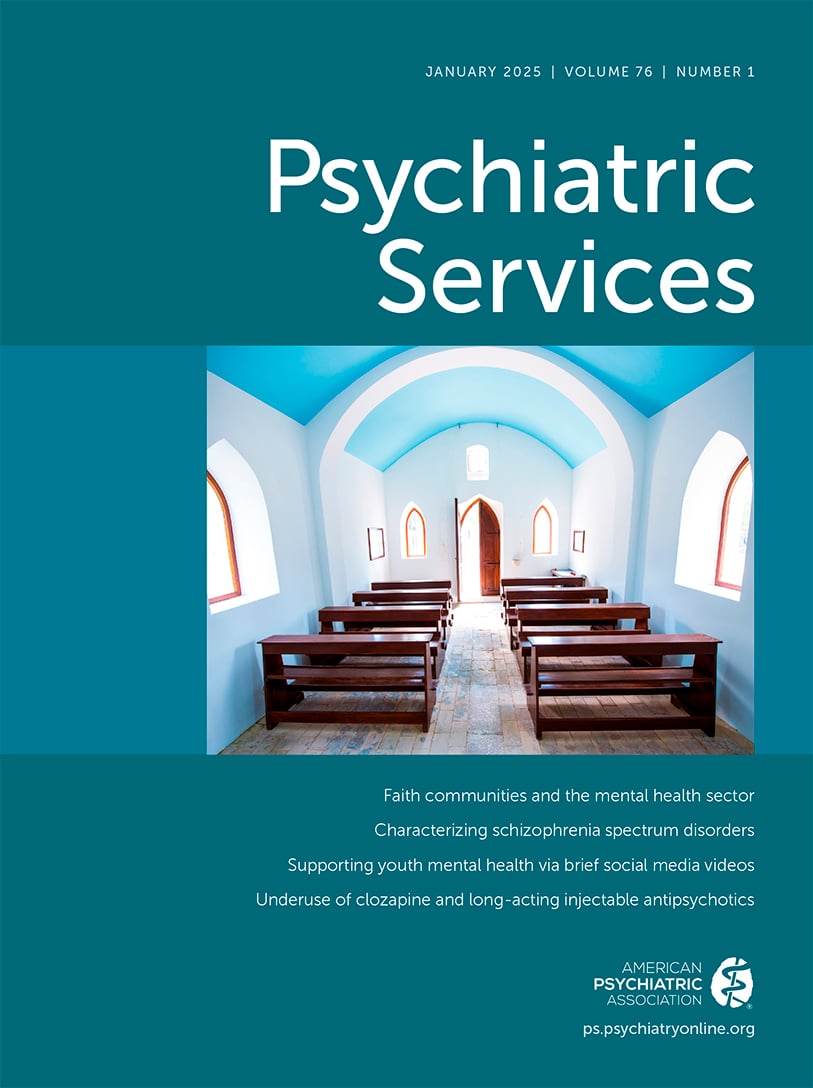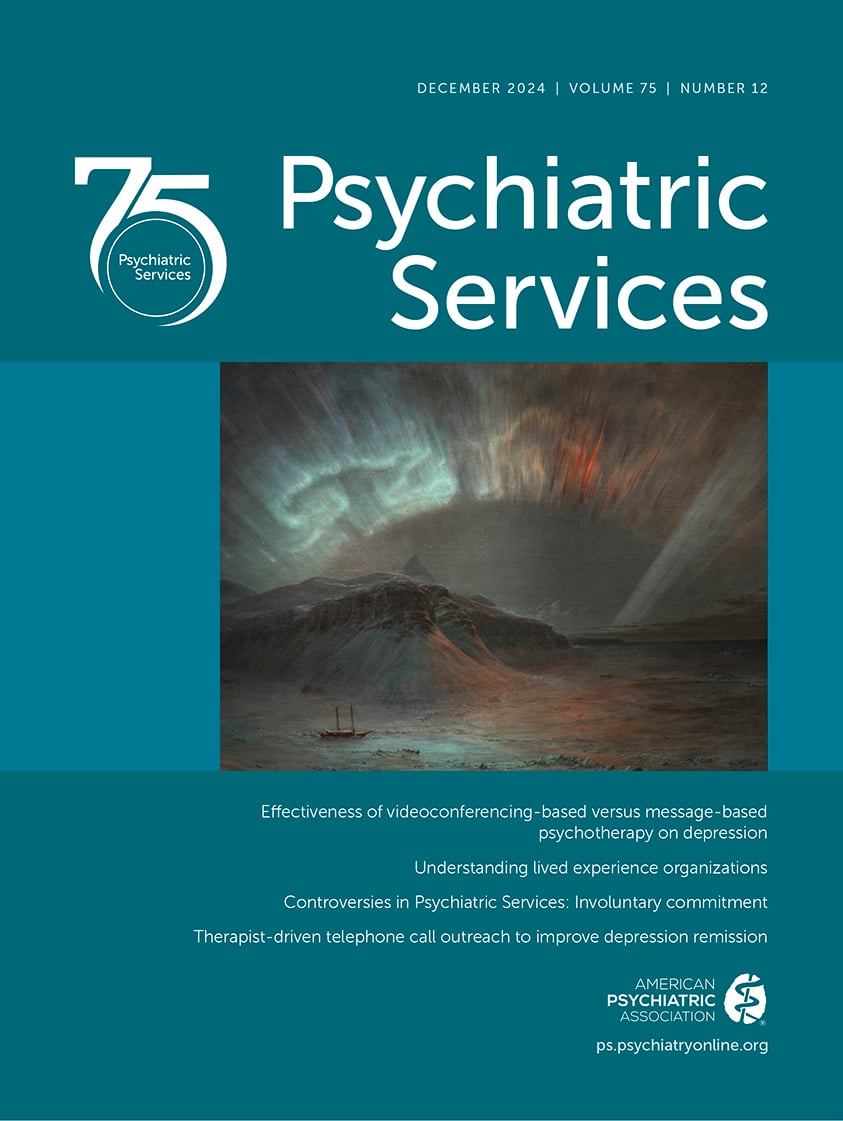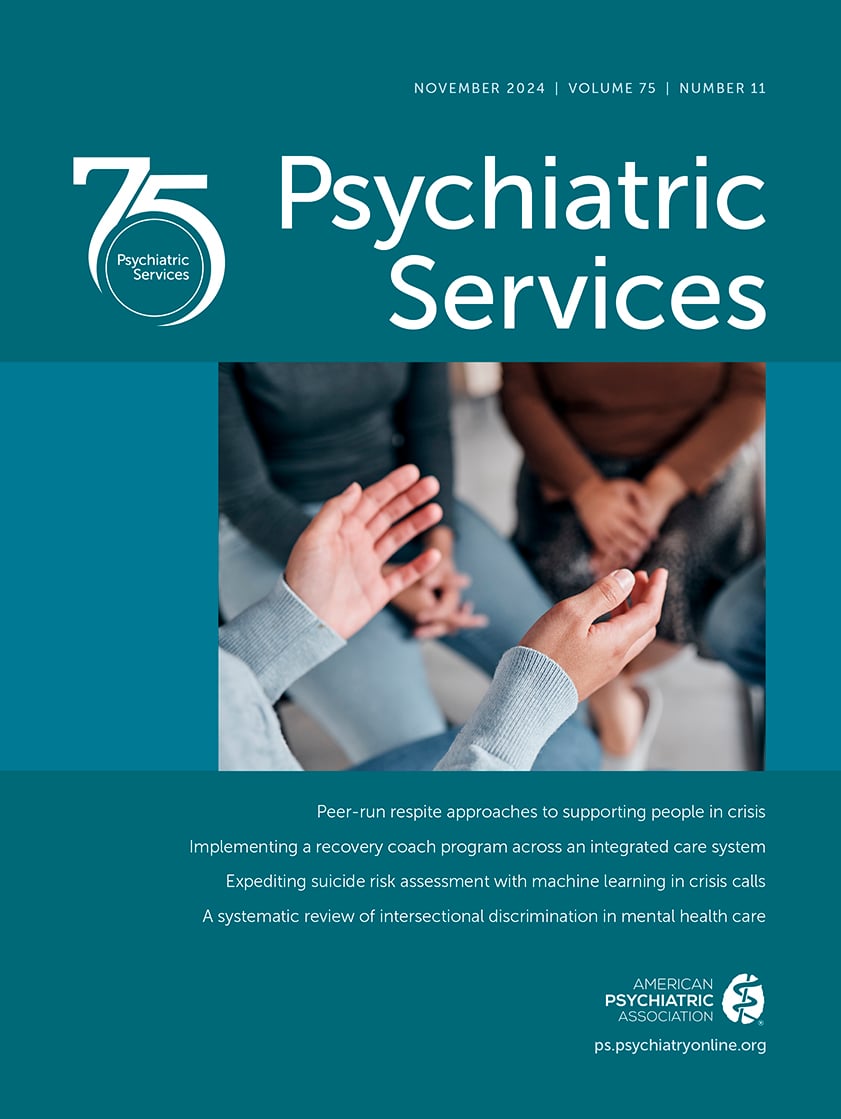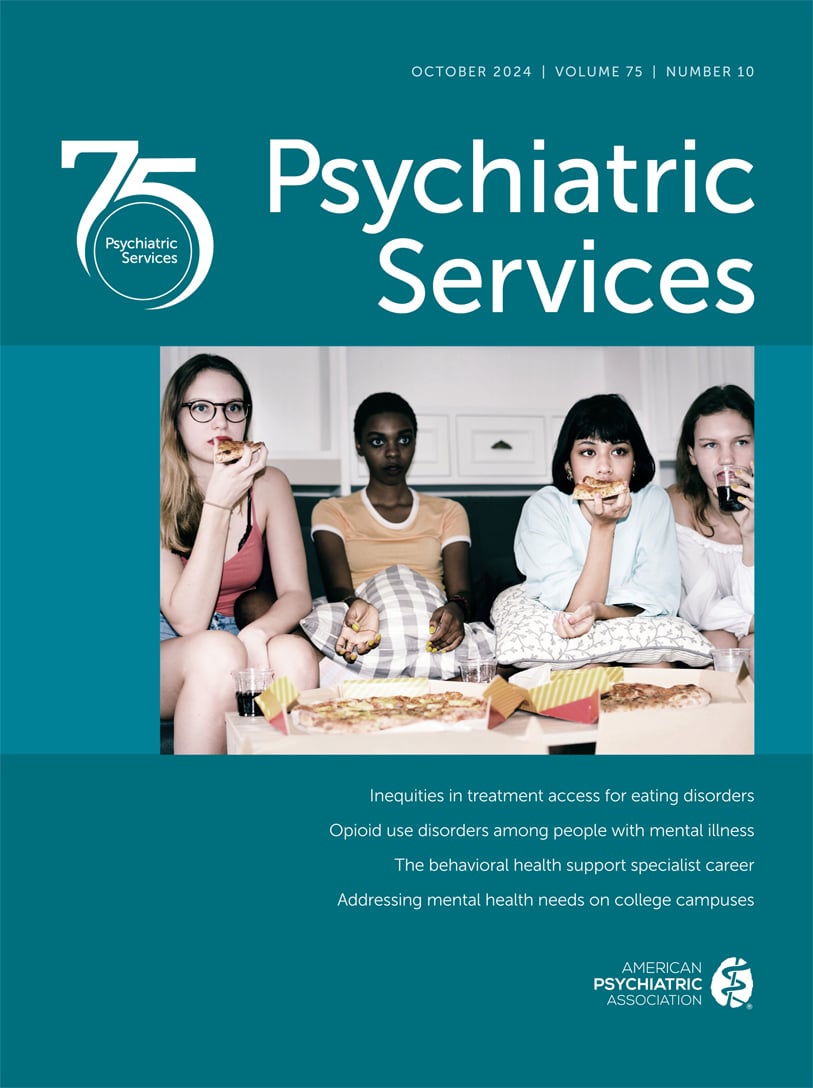Psychiatric Services
- Volume 42
- Number 9
- September 1991
Article
Publication date: 01 September 1991
Pages877–878Introduction from Dr. Perry: As this month's case from Dr. Jacobsen shows, he is an expert at applying theory to practice when confronted with psychiatric problems of patients who are medically ill.
https://doi.org/10.1176/ps.42.9.877Publication date: 01 September 1991
Pages890–891This month's column is based on a discussion of six papers that were presented at an international conference, Changing Mental Health Care in the Cities of Europe. Sponsored by the World Health Organization in cooperation with the City of Amsterdam ...
https://doi.org/10.1176/ps.42.9.890Publication date: 01 September 1991
Pages894–896No single therapeutic intervention has been proven to be superior to others in the inpatient treatment of adolescents with concomitant substance abuse and mental illness. In matching patients with treatment approaches, a cluster of interventions may be ...
https://doi.org/10.1176/ps.42.9.894Publication date: 01 September 1991
Pages899–905In 1978 the President's Commission on Mental Health called for a national plan for the care of persons with chronic mental illness. The plan was completed and released in 1980, but was never adopted as the policy of the incoming Reagan Administration. ...
https://doi.org/10.1176/ps.42.9.899Publication date: 01 September 1991
Pages906–913Forty-two therapists conducting individual psychotherapy with schizophrenic outpatients in a public mental health system responded to a questionnaire that focused on the types of interventions used and the issues and problems encountered in therapy. The ...
https://doi.org/10.1176/ps.42.9.906Publication date: 01 September 1991
Pages913–919This paper presents the methodology for evaluating the Monroe-Livingston demonstration project's capitation payment system (CPS), based in Rochester, New York, for chronic mentally ill patients. To allow for both patient and provider choice within the ...
https://doi.org/10.1176/ps.42.9.913Publication date: 01 September 1991
Pages920–924Demographic and diagnostic intake data on about 10,000 patients at a public psychiatric facility were used to assess whether information recorded on various DSM-III axes could predict the frequency of patients' psychiatric hospitalizations over a follow-...
https://doi.org/10.1176/ps.42.9.920Publication date: 01 September 1991
Pages924–928A high prevalence of mood disorders has been found among persons with chronic fatigue. The comorbidity of mood disorders and substance use disorders has long been recognized. In this study, the preyalence of substance use disorders among 100 patients with ...
https://doi.org/10.1176/ps.42.9.924Publication date: 01 September 1991
Pages929–935Previous studies have shown that many relatives of mentally ill persons are dissatisfied with their relationships with mental health professionals. In this study, 274 relatives or close friends of 168 recently discharged mental patients reported on 1,198 ...
https://doi.org/10.1176/ps.42.9.929Publication date: 01 September 1991
Pages935–938Mental hospital staff who are assaulted by patients are at risk of developing symptoms associated with posttraumatic stress disorder. The Assaulted Staff Action Program (ASAP), a voluntary program, offers support to staff victims of patient assaults in a ...
https://doi.org/10.1176/ps.42.9.935Publication date: 01 September 1991
Pages939–942A retrospective audit of patients' utilization of inpatient psychiatric care at a Department of Veterans Affairs medical center before and after implementation of a prospective payment system compared patterns of utilization by chronic and nonchronic ...
https://doi.org/10.1176/ps.42.9.939Publication date: 01 September 1991
Pages943–947Like many developing countries, Zimbabwe has a shortage of trained mental health professionals. The country is coping by developing an expanded role for nurses and other nonphysician mental health workers and by emphasizing use of medication in treating ...
https://doi.org/10.1176/ps.42.9.943Past Issues
View Issues Archive
Vol. 76 | No. 1

Vol. 75 | No. 12

Vol. 75 | No. 11
